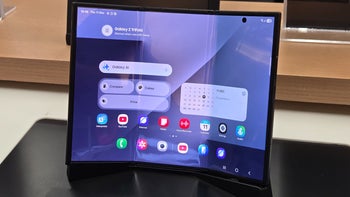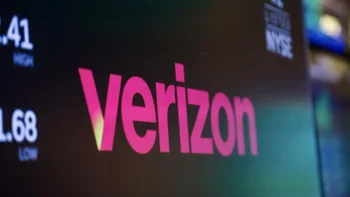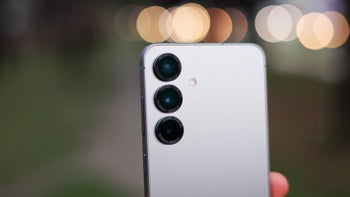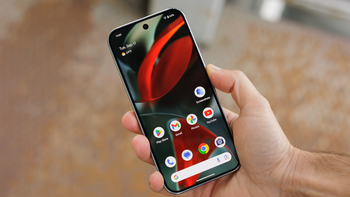Who pays what for how much? Rates examined in US, Canada, UK, Germany and more

Several months ago, the GSM Association conducted a survey assessing how much people paid for LTE service and determined that customers in the US were paying as much as 10 times what other people were paying in other countries. At the time, there was only one major player with LTE service, Verizon Wireless.
Now, all four major carriers in the US, plus a host of regional and local carriers have LTE service available in one way or another. Much of the developed markets are in the same boat. Emerging markets like India are also coming along as well.
But how much do people pay and for what? The answers may surprise you in some cases and certainly other answers will appear obvious. We decided to take a look at what it costs to run a smartphone in the United States, Canada, United Kingdom, Germany, South Africa, India and Australia and plot the costs as it relates to what people get in terms of data. For our readers in South America, we did not plot the rates for Vivo in Brazil because the smartphone plans there are still heavily dependent on talk-time. 6GB of data might cost you R$269 ($118 or $19/GB) or it could cost you R$569 ($250 or $41/GB), with the difference being the amount of talk time that comes with the plan. That said, Vivo's plans trend on the side of being more expensive overall and basically it would plot in a vertical line straight up-and-down.
Why data? Because that is the eventual standard smartphones will begin working around whether it involves surfing the net or making a phone call via VoIP (VoLTE). It is also centric to the function of a smartphone to begin with. However the rate plan delineates it (or not), you are basically paying for access to the data network to one degree or another.
To get some basic equalizers set up, all costs were converted to dollars from their native currency using recent exchange rates that can be found just about anywhere. In this case, all currency conversions were done using xe.com. Since the exchanges are wide, if you want to plot your own conversions or just convert back to your currency, here are the exchange rates we used (and they are going to change when markets open on Monday anyway):
For those that have never looked, some of the plans that are available are quite complex. In many cases these complexities are unavoidable due to the nature of telecom infrastructure or regulatory circumstances. It could also be argued that in some cases it could just be overly-creative marketing, but we will run through what we looked at and you can be the judge.
We picked the largest carrier in each of these markets with one exception. For the United States we picked Verizon and T-Mobile USA as a contrasting benchmark. We also looked at Rogers in Canada, EE in the UK, Telekom (T-Mobile) in Germany, Vodacon in South Africa, Airtel in India and Telstra in Australia. This is not meant to be an end-all-be-all study, we are simply plotting and passing along what we read and sharing a few thoughts. Of course there are different and likely better deals to be had everywhere.
Rogers in Canada has needlessly complex plans. Some of this has to do with the size and regulation of the market, it is small, but developed. So it provides an interesting contrast compared to its neighbor to the south. Canada is still a place where things like long distance charges matter and there is a fair amount of nickel and dime action going on. Right now Rogers has a promo going with its plans and we incorporated them into our mix, but even with these promos in place, Rogers’ rates are only marginally competitive. If the promos were not in place, you would see rates about 30-50% higher than plotted.
EE in the UK has the simplest rate plans, period. Voice and text are unlimited and the rest is just how much data you want. There are two-year, one-year or SIM only plans (meaning you have your own device), and that is all there is to say about that.
In South Africa, Vodacom, a property of Vodafone, there are a number different “smart” plans of varying degrees, including the type of smartphone you have. They also do not include any substantial amounts of data. The new “Red” plans are an all inclusive set-up that provides data, a lot of features and the smartphone of your choice. The comparative rate is rather high on a per GB basis, but the data-only plans offered by Vodacom are the lowest out of all we looked at.
Airtel in India also has a number of complex plans that are based on where your service is centered out of. We looked at the most popular plans available for service that would be based in Delhi. All of the plans have limitations on voice and data to an extent, but the pricing is quite inexpensive by western standards.
Telekom is the new name for T-Mobile in Germany has rates that are largely in line with the industry’s big players. While the rates are not the cheapest or the most expensive, it does pay to shop the plans carefully. Telekom also offers a plan called “Premium.” For €149 per month it includes a new flagship smartphone, 20GB of data and new phone every year. Other plans have familiar tiers of data with varying bandwidth speeds as part of the deal. Telekom also has different plans for different kinds of tablets. An iPad is considered a “premium” tablet so plans cost more than they would for a Galaxy Tab. We gathered the latter.
Telstra in Australia also has familiar tiers of data with service, but the costs rise dramatically compared to other carriers. In the 3GB per month plan, Telstra quickly becomes the most expensive player in the bunch for that segment. Its data only plans are highly competitive though.
What are the reasons behind these various rate structures? There are a number of factors involved. Prevailing economic conditions pretty much mandate that areas with lower incomes and purchasing power are going to create a depressive price environment. That is why prices are lower for services (albeit more complex too) in South Africa and India where the income levels trend lower or poverty levels trend higher.
Manufacturers take such circumstances into account when building entry level priced equipment (and industrial switchgear too). Margins that are shaved to keep a device affordable, like a Nokia 520 at ₹9,999 ($166) is added to a device that will not have as much volume, like the Lumia 920 at ₹32,299 ($540) which is more than three times the cost of a 520 and even more than the retail price that is found in the US (full retail at AT&T is only $449). There are also regulatory burdens as well as costs in maintaining or building a network. Of the all the carriers compared, Verizon is far-and-away the largest contiguous network and thus arguably more expensive to operate and maintain.
As you browse through the charts you can immediately see similar trends. Like any commodity, the more you buy, the more the per unit cost decreases. Data is no different. Low volume purchases are very expensive by comparison and as volume increases, costs decrease and plateau quickly. Verizon’s data rates flatten out between $5.50 to $7.50 per GB when buying volumes beyond 10GB. EE’s lowest rate hits $4.60 at 20GB. Vodacom is the champion at only $2.50 per GB when using the 20GB data only plan. On the flip side of that coin, Telstra's per GB rate is between $30 and $50 with a smartphone, though its data-only plans are well in line with similar services. Telekom's prices do a bit of a zig-zag, where prices go down, then up before trending down again.
Naturally there are variables that are not part of this picture like taxes (sales or VAT) or local fees that can be assessed based on locality. Then there is the true cost based on what you pay for versus what you actually use. One revealing factor is that while services trend to be more expensive in developed markets, they are not out of the norm for the markets they represent and as a matter of course, we can expect these trends to continue.
But how much do people pay and for what? The answers may surprise you in some cases and certainly other answers will appear obvious. We decided to take a look at what it costs to run a smartphone in the United States, Canada, United Kingdom, Germany, South Africa, India and Australia and plot the costs as it relates to what people get in terms of data. For our readers in South America, we did not plot the rates for Vivo in Brazil because the smartphone plans there are still heavily dependent on talk-time. 6GB of data might cost you R$269 ($118 or $19/GB) or it could cost you R$569 ($250 or $41/GB), with the difference being the amount of talk time that comes with the plan. That said, Vivo's plans trend on the side of being more expensive overall and basically it would plot in a vertical line straight up-and-down.
To get some basic equalizers set up, all costs were converted to dollars from their native currency using recent exchange rates that can be found just about anywhere. In this case, all currency conversions were done using xe.com. Since the exchanges are wide, if you want to plot your own conversions or just convert back to your currency, here are the exchange rates we used (and they are going to change when markets open on Monday anyway):
Canadian Dollar 1 = $0.961816
British Pound £1 = $1.51020
Euro €1 = $1.30683
South African Rand 1 = $0.100176
Indian Rupee ₹1 = $0.0166969
Australian Dollar 1 = $0.906150
British Pound £1 = $1.51020
Euro €1 = $1.30683
South African Rand 1 = $0.100176
Indian Rupee ₹1 = $0.0166969
Australian Dollar 1 = $0.906150
For those that have never looked, some of the plans that are available are quite complex. In many cases these complexities are unavoidable due to the nature of telecom infrastructure or regulatory circumstances. It could also be argued that in some cases it could just be overly-creative marketing, but we will run through what we looked at and you can be the judge.
We picked the largest carrier in each of these markets with one exception. For the United States we picked Verizon and T-Mobile USA as a contrasting benchmark. We also looked at Rogers in Canada, EE in the UK, Telekom (T-Mobile) in Germany, Vodacon in South Africa, Airtel in India and Telstra in Australia. This is not meant to be an end-all-be-all study, we are simply plotting and passing along what we read and sharing a few thoughts. Of course there are different and likely better deals to be had everywhere.
Verizon has a “Share Everything” line up with its plans, you pay a flat rate for device access ($40) plus a tiered rate for data, it is pretty straight forward. We compared the data rates that accounted with and without the smartphone access as well as for data-only devices (like a tablet). T-Mobile’s plans are straight forward too, and while the unlimited tier says “unlimited,” there is a fair use policy, so we calculated at 5GB. Would that apply to everyone? Maybe not, but we know that streaming endless video reruns of The Family Guy for 24-hours a day is going to get choked at some point.
Rogers in Canada has needlessly complex plans. Some of this has to do with the size and regulation of the market, it is small, but developed. So it provides an interesting contrast compared to its neighbor to the south. Canada is still a place where things like long distance charges matter and there is a fair amount of nickel and dime action going on. Right now Rogers has a promo going with its plans and we incorporated them into our mix, but even with these promos in place, Rogers’ rates are only marginally competitive. If the promos were not in place, you would see rates about 30-50% higher than plotted.
In South Africa, Vodacom, a property of Vodafone, there are a number different “smart” plans of varying degrees, including the type of smartphone you have. They also do not include any substantial amounts of data. The new “Red” plans are an all inclusive set-up that provides data, a lot of features and the smartphone of your choice. The comparative rate is rather high on a per GB basis, but the data-only plans offered by Vodacom are the lowest out of all we looked at.
Telekom is the new name for T-Mobile in Germany has rates that are largely in line with the industry’s big players. While the rates are not the cheapest or the most expensive, it does pay to shop the plans carefully. Telekom also offers a plan called “Premium.” For €149 per month it includes a new flagship smartphone, 20GB of data and new phone every year. Other plans have familiar tiers of data with varying bandwidth speeds as part of the deal. Telekom also has different plans for different kinds of tablets. An iPad is considered a “premium” tablet so plans cost more than they would for a Galaxy Tab. We gathered the latter.
What are the reasons behind these various rate structures? There are a number of factors involved. Prevailing economic conditions pretty much mandate that areas with lower incomes and purchasing power are going to create a depressive price environment. That is why prices are lower for services (albeit more complex too) in South Africa and India where the income levels trend lower or poverty levels trend higher.
As you browse through the charts you can immediately see similar trends. Like any commodity, the more you buy, the more the per unit cost decreases. Data is no different. Low volume purchases are very expensive by comparison and as volume increases, costs decrease and plateau quickly. Verizon’s data rates flatten out between $5.50 to $7.50 per GB when buying volumes beyond 10GB. EE’s lowest rate hits $4.60 at 20GB. Vodacom is the champion at only $2.50 per GB when using the 20GB data only plan. On the flip side of that coin, Telstra's per GB rate is between $30 and $50 with a smartphone, though its data-only plans are well in line with similar services. Telekom's prices do a bit of a zig-zag, where prices go down, then up before trending down again.
Follow us on Google News














Things that are NOT allowed:
To help keep our community safe and free from spam, we apply temporary limits to newly created accounts: